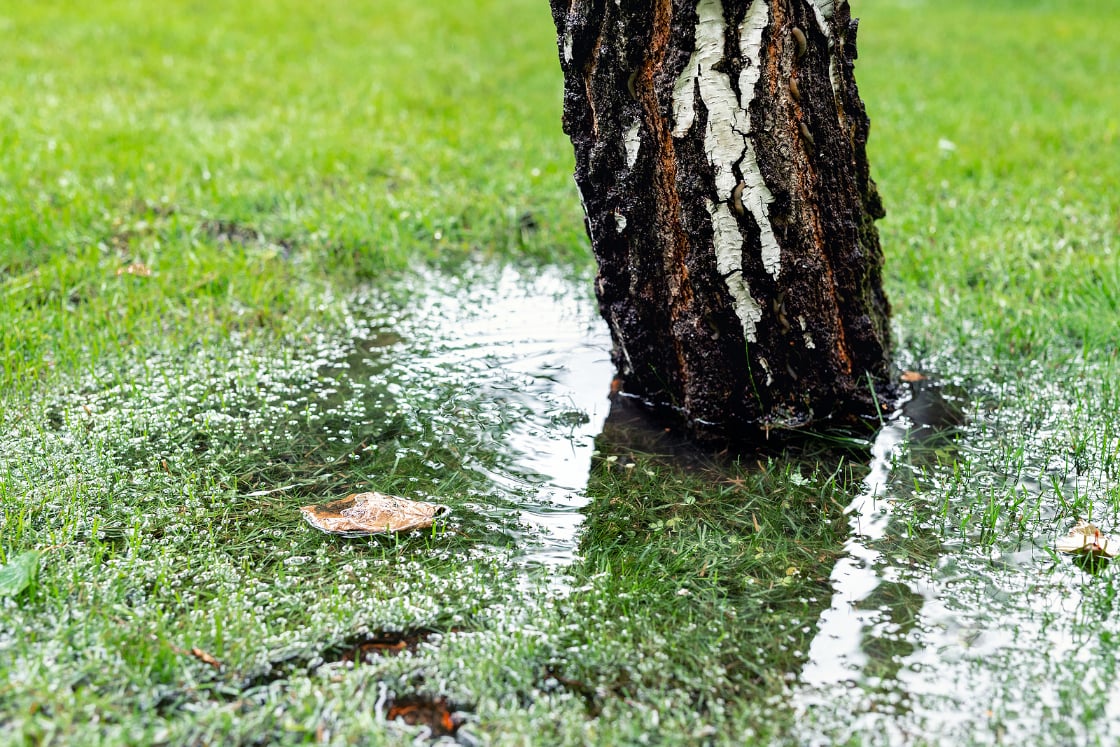
5 Ways The Right Landscaping Saves You From Flooding
Landscape design isn’t just deciding where to plant your trees.
Landscape design incorporates and blends form and function, adding beauty and purpose to your yard. And while Utah is prone to drought, and many landscape companies design based on that problem alone, flooding also happens in the beehive state.
Great landscape design accounts for all seasons and problems, from floods to snow to drought. When it comes to landscape design for flooding, our team at Big Rock Landscaping has five landscape design tips to help you prevent damage to your yard and home during a flood.
Divert Water Away from Buildings
While most homeowners know that excess water pooling around the foundation of their home can lead to damage and flooding, it can be hard to know exactly how to divert the water away from the building effectively.
TRENDING: Your Utah Flooding Preparedness Checklist
Landscape professionals have a few tricks to help channel water away from your home and other structures. A combination of swales (a shallow, almost imperceivable ditch adds to landscaping that subtlety channels water to appropriate areas) berms (man-made mini hills that help water runoff to other areas) or rain gardens (a bowl-like ditch with deep-rooted plants, shrubs, and flowers that collects and uses rainwater) can be used to direct water in your yard.
Adding an extra long corrugated pipe to the end of your downspouts to empty into dryer areas of your yard can also help channel water away from your home’s foundation. The concepts of each are relatively simple to understand, they aren’t always easy to implement or design, so you might want to consider hiring a professional landscaping team to help you decide how to use each water diversion method.
Use Of Trees, Shrubs, And Plants to Reduce Erosion
When water hits your soil, it sweeps the top layer off as it travels, meaning that your topsoil is getting swept away, especially during a flood. Adding plants to your soil prevents erosion from flooding by stabilizing the soil with roots and absorbing more water. Look for plants with deep roots that also tolerate drought (because Utah, after all, is still a very dry state).
RELATED: Will My Yard Flood? Check For These 5 Things
Consider ornamental grasses like blue fescue or pampas grass, or for ground cover use creeping phlox or sedum. You can also use trees with deep root systems like pine, willows, and oaks. To add depth to your landscape and prevent erosion add shrubs like juniper, viburnum, and sumac to your yard. And for a pop of color add black-eyed Susan, coneflower, and goldenrod. Remember, each of these plants has preferred light conditions, water requirements, and more, so consult a landscape professional if you aren’t sure how to use these plants effectively.
Proper Drainage and Grading
Drainage and grading can effectively divert water to appropriate channels but definitely requires expertise and planning. Drainage can come in the form of swales, French drains, gutters, or man-made creeks and rivers.
Grading your yard to divert water into those drainage areas will draw water away from buildings, driveways, and other areas you don’t want to be flooded. The ideal slope is a 2% grade of ¼ inch of slope for every foot of distance. Meaning that for 10 feet the slope should be 2.5 inches. Most homeowners will need the expertise of a professional landscaper to help add drainage and grading because all yards are a little different- grading your yard is not a beginner-friendly DIY project.
Strategic Use of Hardscaping
Remember, erosion occurs when water sweeps away layers of dirt, and during a flood, erosion can remove the topsoil and even deeper layers of dirt. While grading your yard, adding drainage, and planting deep-rooted vegetation in your yard help prevent flood damage, combining thoughtful hardscape design can improve the effectiveness of all flood mitigation designs. For example, a retaining wall can increase water storage capacity and also prevent water from moving into areas like the foundation of your home or driveway.
Adding gravel with pavers rather than a cement pathway lets excess water seep into the ground rather than pool on top. A raised garden bed can prevent erosion of the topsoil of the bed. Hardscaping to prevent flood damage is, again, not for beginner landscapers and should be left to professionals.
LEARN MORE: What Makes Big Rock The Best?
Choose the Right Plants for Flood-Prone Areas
Adding proper drainage, grading your yard, diverting water away from buildings, and the strategic use of hardscaping can help you prevent lasting damage from flooding. But none of those efforts alone will make your yard beautiful, and that’s where plants come in. Using the right plants for flood-prone areas of your yard will help bring beauty to the space, while also reducing erosion and absorbing excess water. Look for plants that have deep root systems and can tolerate heat and drought, like the iris, cattail, elephant ear, and canna. Preparing your yard for a flood isn’t all doom and gloom, it can be a great way to add texture, color, and vibrance to your yard.
Big Rock Landscaping: Designing Stunning Yards For Any Season
Designing and preparing your yard for a flood doesn’t have to mean drudgery. In fact, it can be an opportunity to add thoughtful details like pavers, retaining walls, creeks, and plants. However, planning a yard that will survive both the flood months of Utah’s spring and the dry months of summer is a complicated and delicate balancing act. Don’t let your yard dry up in the summer or flood in the spring by contacting us today, we’re ready to help you create the yard of your dreams.


Leave a Reply
You must be logged in to post a comment.